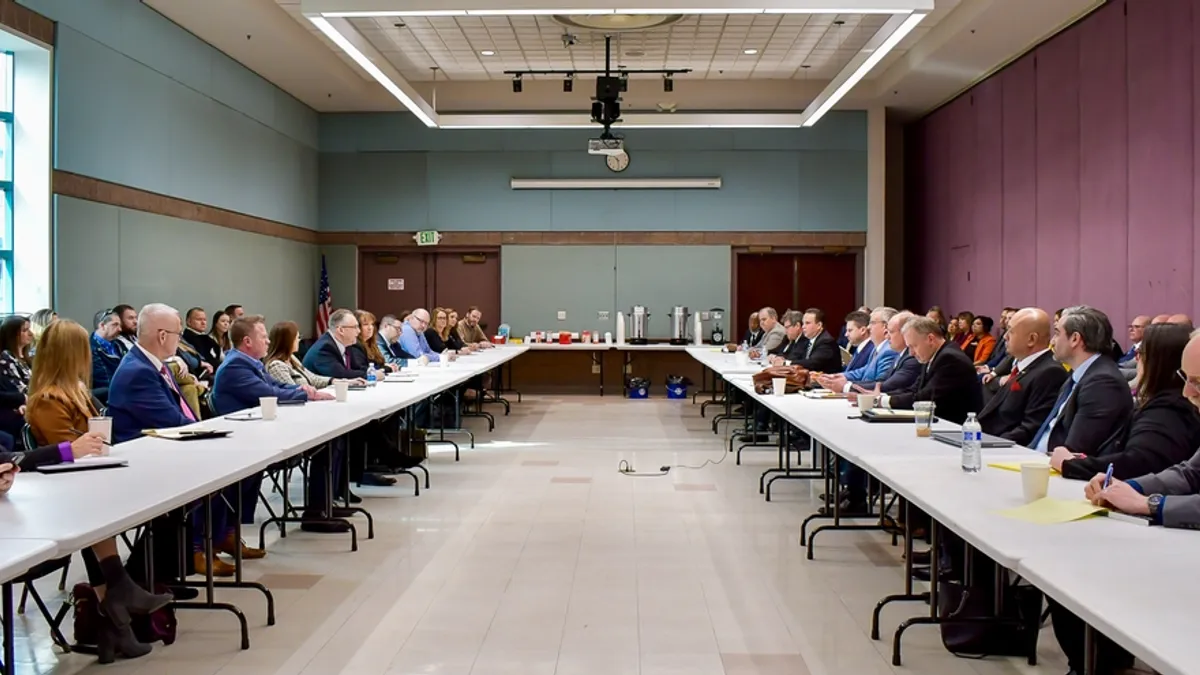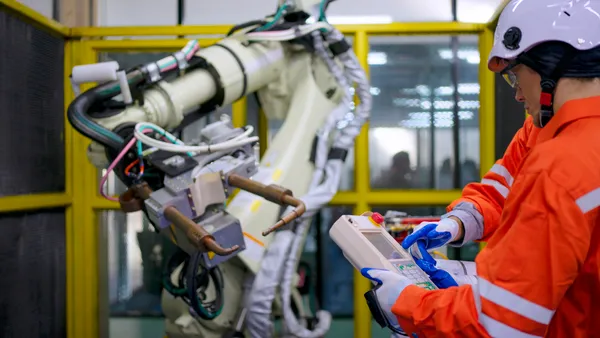For businesses with complex operations or large footprints nationwide, achieving sustainability success in 2025 means adopting scalable, measurable strategies that align with corporate goals.
Sustainability is no longer optional — 87% of companies plan to increase investments and circularity year-over-year* and most customers prefer environmentally responsible companies.
As an environmental services leader, Republic Services recognized an important challenge in the circularity journey: Measuring impact and progress is complicated. That’s why we created the Circularity Index.
Businesses don’t always know where their sustainability strategies stand compared to industry peers. The Circularity Index provides a helpful circularity score against industry peers and enables businesses to evaluate their sustainability performance across multiple locations, identify regional or site-specific challenges, and develop tailored strategies to improve waste diversion and circularity at scale.
What Is the Circularity Index?
The Circularity Index is a tool for companies to assess and advance sustainability efforts by gaining a deeper understanding of their circularity journey, positively impacting the environment and their bottom line.
Republic Services partnered with The Harris Poll to survey 1,200 sustainability leaders from medium to large U.S. businesses across 10 key industries:
- Consumer Packaged Goods (CPG)
- Energy/Utilities/Environmental Services
- Governmental Organizations
- Healthcare
- Hospitality
- Logistics/Warehousing
- Manufacturing
- Retail
- Technology
- Transportation
- And many others, such as financial services, education, construction, media and non-profit organizations
The report includes:
- An in-depth assessment of circularity initiatives and strategies, with three specific focus areas: commitment, execution, and recovery
- Industry-specific performance benchmarks
- A detailed roadmap to help advance circularity initiatives based on circularity stages, from novice to expert
So, whether you’re managing waste diversion for hundreds of retail locations or improving logistics circularity across warehouses, our actionable insights can help you meet corporate sustainability goals while optimizing operations.
With the Circularity Index as a helpful starting point, businesses across a wide range of industries can engage with our Sustainability Solutions consultants to make progress on sustainability goals and optimize costs.
Example solutions include:
Retail: Improving waste diversion across hundreds of locations, ensuring compliance with regional recycling laws while reducing landfill waste
Logistics companies: Identifying opportunities to reduce packaging waste and improve reverse logistics efficiency
Healthcare systems: Improving medical waste disposal and enhancing recycling efforts for non-hazardous materials
How to use the index to drive your circularity efforts forward
Businesses that advance their circularity efforts often see reduced disposal costs, improved operational efficiency, and enhanced brand reputation. With the Circularity Index, we’ve taken some of the guesswork out of the assessment and monitoring stages of the circularity journey.
Ready to see where you land on the circularity maturity curve? Download the Circularity Index and take the assessment. Once you do, we’ll provide a roadmap to help you maintain momentum in your commitment to do better for the environment, your customers, and your company.
Prefer a partner to help get you started? Want a deeper assessment of your business’s opportunities? Visit the Circularity Index page and request a follow-up consultation with a Republic Services Sustainability Solutions expert.
*According to the Circularity Index.
If you’re in the early stages of your circularity journey, you can start by following these key steps from our novice roadmap.
- Engage senior leaders at the corporate level to prioritize circularity and provide a unified vision across all locations.
- Establish a centralized sustainability committee with representatives from key regions or business units to ensure alignment and execution consistency.
- Develop an investment plan that prioritizes initiatives with high ROI and measurable waste diversion across all facilities.
- Set clear internal goals at both the corporate and location levels to encourage accountability.
- Roll out scalable recycling programs tailored to high-volume, commonly recycled materials (e.g., packaging, cardboard, metals, and plastics).
- Audit vendors and haulers to identify who aligns with your company’s circularity goals and can support a multi-site approach.
- Leverage reporting tools to track circularity progress across the enterprise and facilitate share outs of success stories with internal and external stakeholders.
Remember, you don’t have to do this alone. You can enlist an experienced partner to help you get started.










